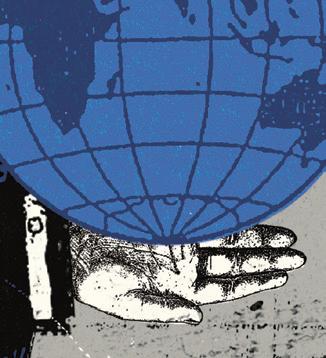
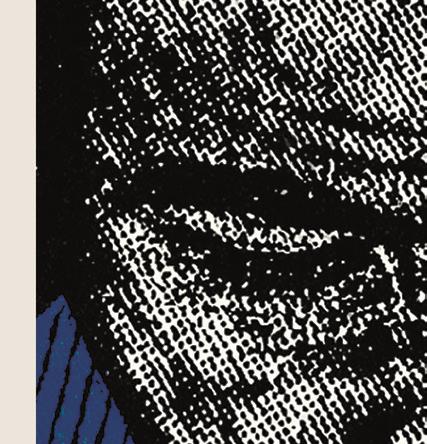



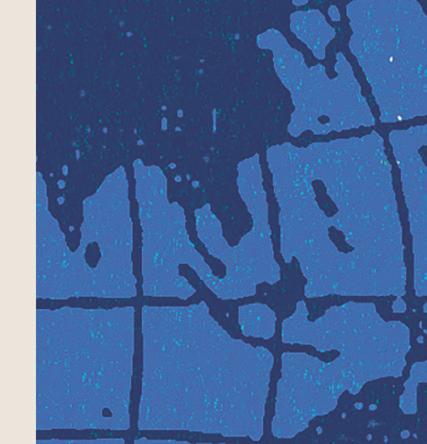
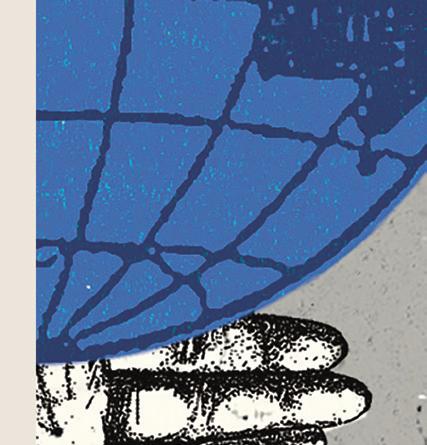
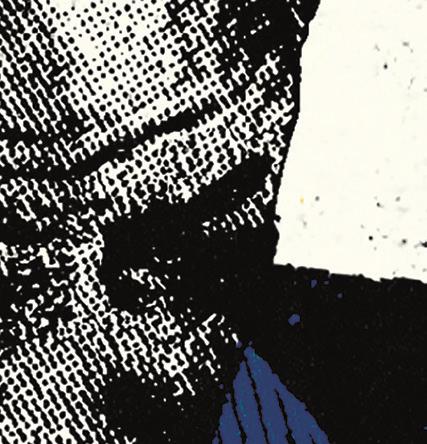

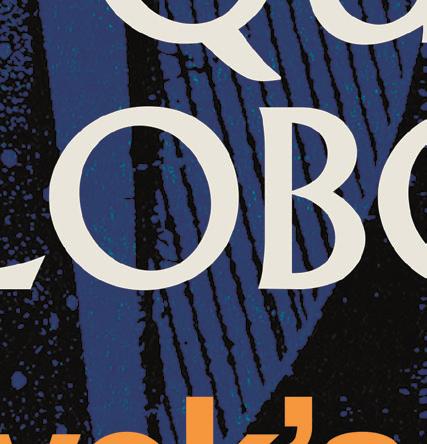
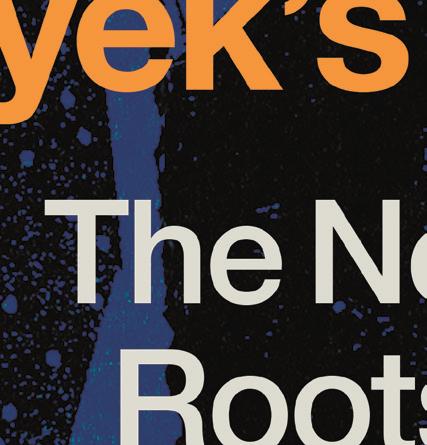
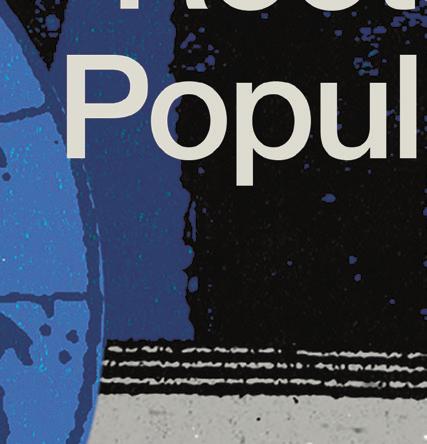
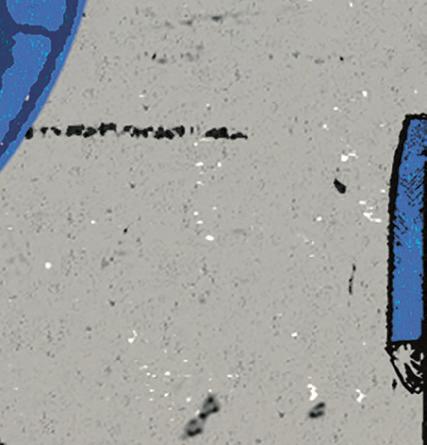


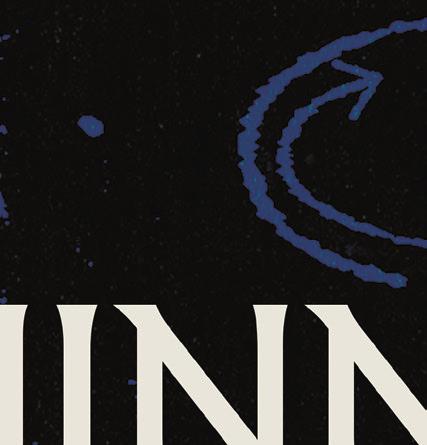
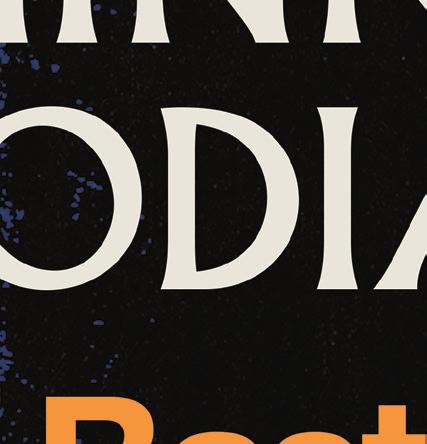
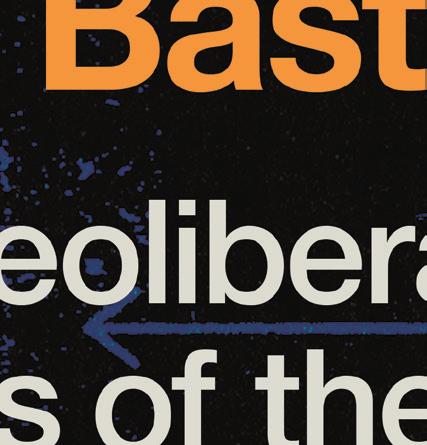
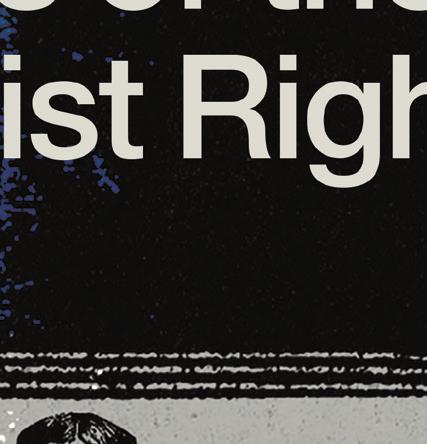
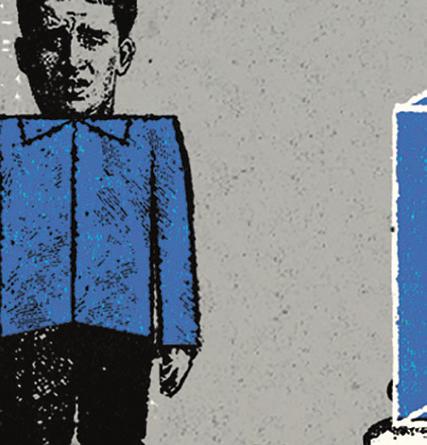

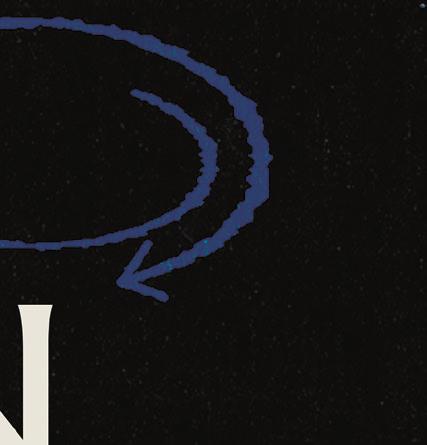
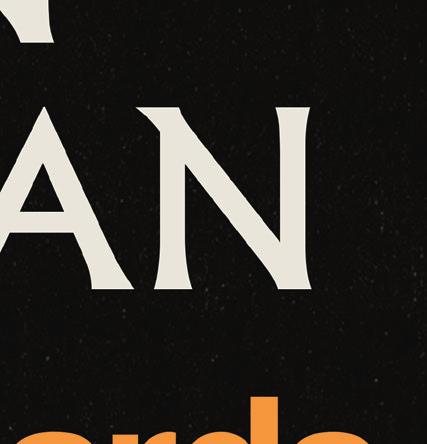

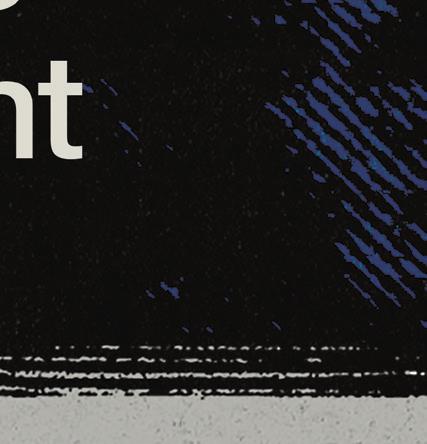

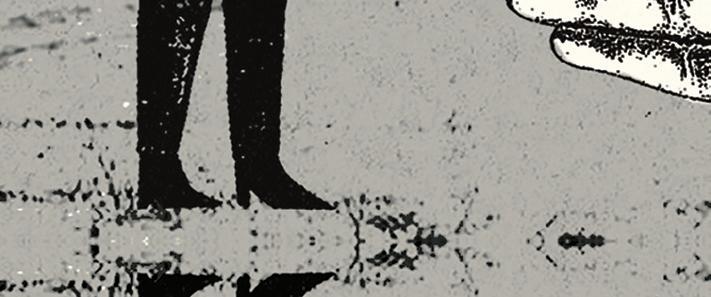
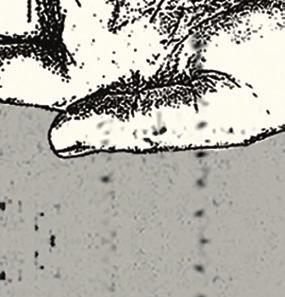





























ALLEN LANE an imprint of
UK | USA | Canada | Ireland | Australia India | New Zealand | South Africa
Allen Lane is part of the Penguin Random House group of companies whose addresses can be found at global.penguinrandomhouse.com.
Penguin Random House UK One Embassy Gardens, 8 Viaduct Gardens, London SW 11 7BW
penguin.co.uk
First published in the United States of America by Zone Books 2025 First published in Great Britain by Allen Lane 2025 001
Copyright © Quinn Slobodian, 2025
Penguin Random House values and supports copyright. Copyright fuels creativity, encourages diverse voices, promotes freedom of expression and supports a vibrant culture. Thank you for purchasing an authorized edition of this book and for respecting intellectual property laws by not reproducing, scanning or distributing any part of it by any means without permission. You are supporting authors and enabling Penguin Random House to continue to publish books for everyone. No part of this book may be used or reproduced in any manner for the purpose of training artificial intelligence technologies or systems. In accordance with Article 4(3) of the DSM Directive 2019/790, Penguin Random House expressly reserves this work from the text and data mining exception.
The moral right of the author has been asserted
Printed and bound in Great Britain by Clays Ltd, Elcograf S.p.A.
The authorized representative in the EEA is Penguin Random House Ireland, Morrison Chambers, 32 Nassau Street, Dublin D 02 YH 68
A CIP catalogue record for this book is available from the British Library
ISBN : 978–0–241–77498–4
Penguin Random House is committed to a sustainable future for our business, our readers and our planet. This book is made from Forest Stewardship Council® certified paper.
INTRODUCTION: VOLK CAPITAL 7
I OF SAVANNAS AND SATELLITES 25
II THE ROCK OF BIOLOGY 37
III ETHNO-ECONOMY 65
IV NEUROCASTES 93
V GOLDBUGS 129
CONCLUSION: ROTHBARD’S MASTIFF 165
ACKNOWLEDGMENTS 177
NOTES 179
BIBLIOGRAPHY 231
INDEX 269
Together, we are promoting a new fusionism that argues that there are as Mises knew iron links between culture, economics, and politics.
Lew Rockwell
In 2006, Charles Murray, the longtime think-tanker and tireless advocate of a revived race science, gave the keynote address at a “Freedom Dinner” marking the twenty- fth anniversary of the international hub for neoliberal think tanks, the Atlas Economic Research Foundation. A member of the Mont Pelerin Society (MPS) since 2000, Murray used his time to rehearse the well-worn story of how Ronald Reagan and Margaret Thatcher provided the opportunity for the ideas of Friedrich Hayek, Ludwig von Mises, and Milton Friedman to break through, aided by “Cato and Heritage and Hoover and the dozens of think tanks around the world that Atlas has fostered.”1 Projecting forward, Murray asked what they would be discussing at an Atlas meeting on its ftieth anniversary in 2031. It would not be economic liberty, free trade, the genius of the entrepreneur, or any of the other standbys of the neoliberal script. He predicted they would be talking about science.
“For the last forty years,” he said, “the battle cry of the Left has been ‘equality.’ ” Science would deal the death blow to this demand. “The explosive growth of genetic knowledge,” he said, “means that within a few years science will de nitively demonstrate precisely how it is that women are di erent from men, blacks from whites, poor
from rich, or, for that matter, the ways in which the Dutch are di erent from Italians.” If the enemy, at its root, was the claim of human equality, science would deliver the coup de grace. The con rmation of ineradicable group di erences would leave a void “in the moral universe of the Left,” Murray predicted. “If social policy cannot be built on the premise that group di erences must be eliminated, what can it be built upon?”2 The same year that he gave the talk, he argued in one of his rare peer-reviewed articles that the persistence of Black/white intelligence di erences made a rmative action untenable. 3
A few years later, Murray expanded on the theme at a meeting of the Mont Pelerin Society in an exotic location: the Galápagos Islands. The name of the meeting was “Evolution, the Human Sciences, and Liberty” and his talk was titled “the rediscovery of human nature and human diversity,” a process that he claimed was going to happen because of new discoveries in genetics. These would induce “reversions to age-old understandings about the human animal.” This would lead to the recon rmation of discredited prejudices as scienti c truths. He dwelled on the question of racial di erence. “Throughout the 19th century and rst half of the 20th century,” he wrote, “physical anthropologists accepted the concept of race with little dissension.” Carleton Coon’s magnum opus, The Origin of Races (1962) “provoked no outrage when it appeared,” he claimed. (Not true; in fact, it “sparked enormous controversy in the anthropological community.”)4 Two events led to what he called “the intellectual eclipse of human nature and human diversity in the United States”: the civil rights movement and the feminist movement. 5 Political developments had since obscured the primal origins of di erence between not only the races but the sexes. Appealing to the sociobiology and evolutionary psychology developed at Harvard University by E. O. Wilson, Robert L. Trivers, and his students, Leda Cosmides and John Tooby (the latter two who were in attendance in the Galapagos), Murray claimed that we still bore binary gender di erences as an inheritance of the savanna. “Men who could process trajectories in three dimensions the trajectory,
say, of a spear thrown at an edible mammal had a survival advantage,” he said in Ecuador. “Women did the gathering. Those who could distinguish among complex arrays of vegetation, remembering which were the poisonous plants and which the nourishing ones, also had a survival advantage.” This is why, he claimed, “elevated three-dimensional visuospatial skills” for men and “an elevated ability to remember objects and their relative locations” for women “show up on tests of these abilities today.” Going back to nature was necessary to rea rm hierarchies hardwired into genetics challenged by insurgent social movements and progressive ideologies. Shattering taboos around race and gender di erences was necessary not only to ght the pernicious e ects of what Murray called the “Equality Premise” but to better recognize and organize patterns of aptitude in a changing economy. 6
This book argues that the appeal to nature was a central part of the neoliberal solution to a problem they faced in the decades after the Cold War. This was an era in which communism was dead but, as they put it, Leviathan lived on. Public spending continued to expand even as capitalism became the only surviving economic system. Behind this was a political problem. The social movements of the 1960s and 1970s had injected the poison of civil rights, feminism, a rmative action, and ecological consciousness into the veins of the body politic. An atmosphere of political correctness and “victimology” stulti ed free discourse and nurtured a culture of government dependency and special pleading. Neoliberals needed an antidote.
Confounded by persistent demands for the redress of inequality at the expense of e ciency, stability, and order, neoliberals turned to nature in matters of race, intelligence, territory, and money as a way to erect a bulwark against the encroaching demands of progressives and hopefully roll back social changes to return to a hierarchy of gender, race, and cultural di erence they imagined to be rooted in genetics as well as tradition.
Neoliberals had always been concerned with the extra-economic conditions for capitalism’s survival, but they had usually focused on
law, religion, and morality. The growing in uence of Friedrich Hayek’s ideas of cultural evolution and the mainstream popularity of neuroscience and evolutionary psychology led many to turn to the harder sciences. Changing demographics an aging white population matched by an expanding nonwhite population made some right-wing neoliberals and libertarians rethink the conditions necessary for capitalism. Perhaps some cultures, and even some races, might be predisposed to market success while others were not? Perhaps cultural homogeneity was a precondition for social stability, and thus the peaceful conduct of market exchange and enjoyment of private property?
I call the new strain of the neoliberal movement that crystallized in the 1990s the “new fusionism.” While the original fusionism of the 1950s and 1960s and the New Right melded libertarianism and religious traditionalism in the style of William F. Buckley and the National Review, the new fusionism defended neoliberal policies through arguments borrowed from cognitive, behavioral, and evolutionary psychology and in some cases genetics, genomics, and biological anthropology.7 As early as 1987 the conservative historian Paul Gottfried, who coined the term “alternative right” with Richard Spencer, identi ed that new fusionism on the Right. Whereas older conservatives may have used a language of religion to back up claims about human di erences, Gottfried noted that they had begun to use disciplines like sociobiology, the discipline created by ecologist E. O. Wilson to, in Wilson’s words, “biologicize” questions of human ethics. 8 New fusionism uses the language of science to justify the extension of competitive dynamics ever deeper into social life.
Identifying the rise of new fusionism o ers a new story about the resurgence of the Far Right in recent years. While it has become popular to describe a “backlash” against forces of neoliberal globalization, attention to the unlikely coalitions described in this book o er
a di erent picture.9 As we will see, new fusionists formed alliances with advocates of traditionalism, nationalism, and cultural homogeneity. Among the new fusionists we nd self-described “paleolibertarians” who sought to build their claims on the bedrock of biology and immutable di erences. The right-wing neoliberals who joined, and in some cases founded, new populist parties did not reject the dynamic of market competition; they deepened it. “Closed borders” libertarians continued to demand free movement for capital and goods; they simply drew a hard line against certain kinds of people. As I argue in chapter 3, the demand for an ethnostate was better understood as the demand for an “ethno-economy.”
New fusionism gathered steam in the disorienting era that followed the end of the Cold War. Existing studies of neoliberalism account poorly for the period that neoliberals were supposedly at their peak: the 1990s and 2000s. It was then, we are told, that the neoliberals had routed their enemies, won the battle against communism, and conscripted international nancial institutions to carry out their worldchanging project. One could be excused for assuming there was not much left to explain. Neoliberals must have spent the decade polishing busts of Mises and Hayek to be placed in libraries and squares across Eastern Europe and gloating over their victories.10 But this was not the case at all. In fact, looking back at the meetings of the neoliberals in the wake of Berlin Wall’s fall and the Soviet collapse, one discovers something startling. They seemed to fear the Cold War had been lost.
“It is tting that the Mont Pelerin Society, the world’s leading group of free market scholars, was meeting the week that communism collapsed in the Soviet Union,” the Wall Street Journal reported in September 1991, but those gathered saw that as “Communism exits history’s stage, the main threat to liberty may come from a utopian environmental movement that, like socialism, views the welfare of human beings as subordinate to ‘higher’ values.”11 Communism was a chameleon. It was changing shades from red to green. “Having fought back a red tide, we are now in danger of being engulfed
by a green one,” warned Fred Smith of the Competitive Enterprise Institute at a Mont Pelerin Society meeting a decade later. “The forces that once marched under the banner of economic progressivism have regrouped under a new environmental banner.”12
Interviewed by the journalist and later restrictionist rebrand Peter Brimelow in 1992, Milton Friedman expressed a similar sentiment. Asked about the Cold War’s end, he responded: “Look at the reaction in the U.S. to the collapse of the Berlin Wall. . . . There weren’t any summit meetings in Washington about how to cut down the size of government. What was there a summit meeting about? How to increase government spending. What was the supposedly rightwing President, Mr. Bush, doing? Presiding over enormous increases in paternalism the Clean Air Act and the Americans with Disabilities Act, the so-called Civil Rights quota bill.”13 Friedman saw ecological protection and the “special interests” of disabled people and minorities as the growth areas for postcommunist statism.
“The enemy has mutated,” wrote the economist Victoria Curzon-Price, one of the Mont Pelerin Society’s only three female presidents. “In 1947 the founders of our Society battled with outright communism, planning and hard Keynesianism. Today our opponents are more elusive.”14 At the very rst meeting of the MPS after the wall fell in Berlin, held a train ride away in Munich, the president and Italian economist Antonio Martino declared that “socialism is dead, statism is not.”15 The three biggest threats were environmentalism, state spending, and European integration. On the rst, those in attendance heard that the depletion of ozone layer could just as well be due to kelp beds, ocean currents, and volcanoes as human activity.16 More pressing was the problem of Europe. The supranational institutions that had once promised to be engines of what Curzon-Price called “the Ferrari model of integration” speeding up competition between
labor, product, and nance markets had proved to be socialist Trojan horses.17 The parallel of the uni cation of Europe to the dissolution of the Soviet bloc struck many libertarians as uncanny and frightening. “It would be an irony of history,” German historian of science Gerard Radnitzky said at the MPS meeting in Munich, “if, at the time when the ‘postsocialist’ countries attempt to de-socialize, to make the transition to freedom, a European super-state should embark on the road to more government and more bureaucracy, to creeping socialism and hence to less freedom and less growth.”18
Europe was only part of the problem. “Leviathan not only lives,” Radnitzky wrote, “but has been growing.”19 At the next year’s meeting, the new president, University of Chicago economist Gary Becker, repeated the refrain: “The mission of the MPS may appear to have been largely accomplished with the collapse of communism in most of Eastern Europe. . . . But unfortunately much remains to be done. The vast majority of the world’s populations still live in countries that sharply curtail both economic and political freedoms. And even in the democratic countries of Western Europe, the U.S., and elsewhere, government control and regulation of economic activities is expanding, not contracting.”20
Part of the problem for neoliberals was that they had been so concentrated on their opponent that they had not spent enough time re ecting on what day one in their utopia would look like. The neoliberal quandary at the Cold War’s end was that decades of “collectivism” and state dependency even in the capitalist world had eroded the virtues of self-reliance that would allow for the reproduction of social life. Speaking at the ftieth anniversary meeting of the MPS at the Hoover Institution in 1997, the president of the Bradley Foundation, MPS member Michael S. Joyce, said that “attention has consistently failed to focus on a very important and very sobering reality. Were we tomorrow to have the political forces to dismantle the welfare state, and should we set about dismantling it, we would face a frightening but unavoidable fact: behind the welfare state, there is almost nothing.”21
Neoliberals’ own logic dictated that the dependency produced by the nanny state had left thin roots where the dense connective tissue of community and family should be. “The mechanisms which existed prior to the welfare state and in some measure served to ful ll its functions are gone,” Joyce observed. This posed a problem: “the fuzzy and attractive promise that the private sector and the free market will ll the gap instantly like Athena sprung fully born from Zeus thus replacing the welfare state and making the new order acceptable to our citizens is an utter chimera.”22 Here we nd something remarkable. It was not just that neoliberals denied they had won the Cold War. They were afraid of the reality that would result if they actually had.
Charles Murray expanded on this theme in a paper circulated for a Mont Pelerin Society meeting in Cancún, Mexico in 1996. Because “a radical liberal reform . . . now seems potentially within reach in the United States,” neoliberals needed to think about “how a liberal state may be expected to deal with the human su ering that persists after liberal policies are in place.” Murray, no doubt mindful of the enormously disruptive process being unleashed by economic shock therapy in post-Soviet Russia as he wrote, approvingly quoted Herbert Spencer’s analogy of society to a drug-addicted human: “the transition from state bene cence to a healthy condition of self-help and private bene cence must be like the transition from an opium-eating life to a normal life painful but remedial.”23
The paragraph from which the quote came was brutal in its negative eugenic judgment. “Having, by unwise institutions, brought into existence large numbers who are unadapted to the requirements of social life, and are consequently sources of misery to themselves and others,” Spencer wrote in 1898, “we cannot repress and gradually diminish this body of relatively worthless people without in icting much pain. Evil has been done and the penalty must be paid.”24 Here
he cites the “social opium-eating” of welfare and state assistance as only a delay of the inevitable withdrawal and “misery.” One could hope that the addict would recover. As Murray pointed out, many neoliberals claimed that “the last thirty years represent an aberration which goes against human nature, and all that is required for health is to stop the poison and let the healing process begin.” Yet these remained hypotheses, and “scholars have yet to esh them out with data.”25 It was precisely because neoliberals were so close to success that they needed to look with clear eyes at the painful transition out of the world of the social state. Would recovery of the masses be possible or, as in Spencer’s calculus, was the very existence of the dependent population a problem in need of solution?
In the 1990s, neoliberals and libertarians argued that the future society had to be constructed from ground zero. It was necessary to return to rst principles, to open a wide-ranging discussion on the human condition and the prerequisites for market order. This meant a shift in focus. “It is of the utmost importance that we get away from the tendency to give too much weight to purely economic issues,” Mont Pelerinians Pascal Salin and Henri Lepage wrote. “We must diversify our intellectual outlook by calling more on academics from other disciplines: historians, philosophers, political scientists, lawyers, anthropologists. Our choice of topics should be enlarged to more philosophical, political or sociological issues.”26
Enter science and the return to nature. “Much of liberal thought has assumed that the human animal is tted for liberalism everywhere and under all circumstances,” Murray wrote. “If liberal institutions are in place, right behavior will follow. Perhaps it will be more di cult to install those institutions in some cultures in others but, once installed, they will work their magic. Is this really the case? I am cautiously optimistic. I think that, over the very long run centuries perhaps the assumption is in fact true. But it is much less obviously true in the short run. Can Russia become a prosperous liberal state in the foreseeable future no matter what laws are put on the books? Can
Iran? Can Tanzania? Can Peru? Just listing the countries serves to emphasize how di erent are the cultural obstacles that each must surmount.” Murray wrote that “it is now beyond serious scienti c dispute that a great many of the most individual human capacities are xed before a person reaches an age at which they have any control over the matter. . . . Of the variation attributable to the environment after birth, much is determined within the rst few years of life probably within the rst months of life. This combination of genetic and early environmental in uences is so powerful that IQ scores stabilize around the age of six, before anyone can be called an independent moral actor.”27 The advantages that led to long-term prosperity were implanted deeply in particular cultures and could not be extracted or replicated easily.
Gerard Radnitzky elaborated this approach when he said of the “evolutionary libertarianism” of Hayek and the Austrian school was that “its central tenet is the claim that there is a human nature, and it is part of our phylogenetic inheritance.” Against this he posed the socialist belief that the human was “a blank slate whose phylogenetic inheritance is negligible in comparison with the in uence upon him of the social environment.”28 If this was a market fundamentalism, it was one rmly anchored in a belief in the science of nature and human di erence.
Like Radnitzky, many new fusionists took inspiration from Hayek’s immersion in themes of evolution, morality, and demography by the end of his life. As the rst chapter argues, we cannot understand the enduring status of these themes in neoliberal discussions or the anointing of Charles Murray as the Friedrich Hayek Emeritus Chair in Cultural Studies at the American Enterprise Institute without diving into areas with which few noninitiates are familiar. 29 Yet I question the legitimacy of intellectual parentage claimed by these thinkers. In 1993, the Canadian intellectual John Ralston Saul recounted the
tortuous history of reason and rationality in Western philosophy and politics in a book called Voltaire’s Bastards. 30 In partial homage to this book that meant so much to me as a teenager scouring the shelves of used bookstores on an island o the Western edge of North America, I dub my cast of characters Hayek’s bastards because so many lapse into the very intellectual errors that Hayek himself diagnosed. Above all is the danger of what Hayek called “scientism” and the “pretense of knowledge.” Both intentionally and not, these thinkers paid poor tribute to their master. As later chapters show, those who turned to Hayek’s own teacher, Ludwig von Mises, as their intellectual center of gravity also often misread and stretched the writings of their mentor to t their politics. The point is not to salvage the honor of the Austrian school sages but to show how ideas are instrumentalized, adapted, and weaponized, taking di erent form in di erent contexts, while pedigrees hide mutations from generation to generation.
The scientization of neoliberal thought in the new fusionism is a further twist of the screw in the argument dominant since the 1930s that neoliberalism is not a doctrine of the market as much as what some of them call the metamarket. The ight to nature is an attempt to ground neoliberalism in something beyond the social. A key gure in the new fusionism of race theory and libertarianism was Murray himself, an MPS member and self-avowed libertarian, who has melded genetic pronouncements with bootstrapping family-values talk for over two decades and become beloved to the racialist Right. More directly engaged in politics was the self-described Austrian economist and libertarian Murray Rothbard, also an MPS member, who advised Republican presidential candidate Patrick J. Buchanan and outlined a strategy of “paleo-populism” in the early 1990s as a way of using electoral democracy as a transition to the libertarian goal of a stateless society. He pushed a hard line on racial di erence and saw the dissolution of Yugoslavia, for example, as evidence that culturally homogeneous secession was the only viable form of organization.
Rothbard’s intellectual heir Hans-Hermann Hoppe, a speaker at
MPS meetings, radicalized his mentor’s program further, vilifying democracy as “the god that failed,” proposing racial explanations for patterns of economic behavior, and creating forums for exchange between theorists of eugenics, ethnic secessionism, and Austrian economics. Hoppe was active in both the United States and Central Europe, acting as a bridge to dissident MPS members in Germany and Austria who sought to create their own alliances to the Right of the mainstream parties to counteract both European integration and the demographic threat of nonwhite immigration.
In Germany, the racialist Right position crystallized in the unlikely gure of a card-carrying Social Democrat and central bank board member in 2010. Thilo Sarrazin’s book Germany Abolishes Itself has sold more than 1.5 million copies and draws on the same body of research as Murray, Rothbard, and Hoppe to make the case for race differences in cognitive capacity. Sarrazin’s synthesis of free trade, independent monetary policy, and biological racism is the intellectual core of the insurgent Alternative for Germany (AfD) and Austrian Freedom Party. Hoppe’s rhetoric of violent suppression of di erence and program of racialized secession has been embraced by the alt-right.
Attention to the new fusionism and Hayek’s bastards helps clear up some of the confused framing of politics in the last several years. Since the political surprises of the Brexit vote and Trump’s victory in 2016, there has been a stubborn story that explains so-called right-wing populism as a grassroots rejection of neoliberalism, often described as market fundamentalism, or the belief that everything on the planet has a price tag, borders are obsolete, the world economy should replace nation-states, and human life is reducible to a cycle of earn, spend, borrow, die. This “New” Right, by contrast, claims to believe in the people, national sovereignty and the importance of culture. As mainstream parties lose support, the elites who promoted neoliberalism out of self-interest seem to be reaping the fruits of the inequality and democratic disempowerment they sowed.
But as this book helps make clear, this story does not capture the
whole truth. By looking more closely, we can see that important factions of the emerging Right were, in fact, mutant strains of neoliberalism. The parties dubbed as right-wing populist, from the United States to Britain and Austria, have rarely been avenging angels sent to smite economic globalization. They o er few plans to rein in nance, restore a Golden Age of job security, or end world trade. By and large, the so-called populists’ calls to privatize, deregulate, and slash taxes come straight from the playbook shared by the world’s leaders for the past thirty years. 31
Even more fundamentally, to understand neoliberalism as an apocalyptic hypermarketization of everything is both vague and misleading. As many histories now show, far from conjuring up a vision of capitalism without states, the neoliberals gathered around the Mont Pelerin Society founded by Hayek (who used the term “neoliberalism” as self-description into the 1950s) have re ected for nearly a century about how the state needs to be rethought to restrict democracy without eliminating it and how national and supranational institutions can be used to protect competition and exchange. 32 When we see neoliberalism as a project of retooling the state to save capitalism, then its supposed opposition to the populism of the Right begins to dissolve.
Both neoliberals and the New Right scorn egalitarianism, global economic equality, and solidarity beyond the nation. Both see capitalism as inevitable and judge citizens by the standards of productivity and e ciency. Perhaps most strikingly, both draw from the same pantheon of heroes. A case in point is Hayek himself, who is an icon on both sides of the neoliberal/populist divide. Speaking alongside Marine Le Pen at the party congress of the French National Front in 2018, self-described populist Steve Bannon condemned the “establishment” and the “globalists,” yet built his speech around Hayek’s own metaphor of the road to serfdom and invoked the authority of the master’s name. “The central government, the central banks, the central crony capitalist technology companies control you and have taken you to a Road to Serfdom in three ways,” he said. “The central banks are
in the business of debasing your currency, the central government is in the business of debasing your citizenship, and the crony capitalist technological powers are in the business of debasing your own personhood. Hayek told us: the Road to Serfdom will come through these three.”33
Less important than the barely discernible link to Hayek’s actual writing was Bannon’s re exive appeal to the Austrian thinker for authority. In Zurich the week before, Bannon also summoned Hayek. There he was hosted by a newspaper publisher, right-wing Swiss People’s Party politician, and member of the Friedrich Hayek Society, Roger Köppel, who presented Bannon with the rst issue of their newspaper, WirtschaftsWoche, while whispering sotto voce that it was “from 1933” a time when that very newspaper was supportive of the Nazi seizure of power. “Let them call you racists,” Bannon said in his stump speech, “let them call you xenophobes. Let them call you nativists. Wear it as a badge of honor.” The goal of the populists, he said, was not to maximize shareholder value but “maximize citizenship value.”34 This sounded less like a rejection of neoliberalism than a deepening of the economic logic into the heart of collective identity.
While in Europe, Bannon also met with Alice Weidel, former Goldman Sachs consultant and one of two heads of the right-wing populist Alternative for Germany (AfD) party, and a member of Germany’s Friedrich A. Hayek Society until early 2021. 35 Another AfD member, a former libertarian blogger and gold consultant, Peter Boehringer, whose story is told at length in chapter 5, is also a Hayek Society member, Bundestag delegate from Amberg in Bavaria, and chair of the parliamentary budget committee. In September 2017, Bannon’s former outlet, Breitbart.com, ran an interview with Beatrix von Storch, the AfD’s deputy party leader and another Hayek Society member. She explained how Hayek had inspired her commitment to “rehabilitate the family.”36 In neighboring Austria, the negotiator on the right-wing Austrian Freedom Party’s short-lived coalition with the
Austrian People’s Party was the director of Vienna’s Hayek Institute, Barbara Kolm. 37
Naomi Klein memorably described neoliberalism as a “shock doctrine”: swoop in at times of disaster, gut and sell o public services, and transfer control from states to corporations. 38 The Washington consensus described by the economist John Williamson in 1989 is perhaps the most famous example of neoliberal solutionism: a list of ten must-dos for developing countries from tax reform to trade liberalization to privatization. 39 From this perspective, neoliberalism can look like a recipe book, a panacea, and a one-size- ts-all nostrum. But the writings of neoliberals themselves o er a di erent picture and this is where we must go to make sense of the apparently contradictory political manifestations. When we do, we discover that neoliberal thought is not lled with solutions but with problems. Can judges, dictators, bankers, or businesspeople be reliable guardians of economic order? Can institutions be made, or must they grow? How can markets be accepted by people in the face of their frequent cruelty?40 Radnitzky captured the puzzle well in the epigraph to his paper from the MPS meeting in Munich. It was from Anthony de Jasay: “Democracy’s last dilemma is that the state must, but cannot, roll itself back.”41
Neoliberals disagreed about which institutions would safeguard capitalism from democracy. Some defended a return to the gold standard, while others argued that currencies should be free to oat. Some fought for strong antitrust policies, others accepted some forms of monopolies. Some thought ideas should circulate freely, others made the case for strong intellectual property rights. Some thought religion was a necessary condition for a liberal society, others saw it as dispensable. Most saw the traditional family as the basic economic and social unit, but others disagreed. Some saw neoliberalism as a matter of designing the right constitution, others saw a constitution in a
democracy as in a memorably gendered metaphor from de Jasay “a chastity belt whose key is always within the wearer’s reach.”42 Compared to other political and intellectual movements, however, it was the absence of serious sectarian splits within the neoliberal movement that was most remarkable. From the 1940s to the 1980s, the center more or less held. The sole major internal con ict came in the early 1960s with the estrangement of one of the movement’s leading thinkers and so-called intellectual father of the social market economy, the German economist Wilhelm Röpke. 43 It foreshadowed later con icts that Röpke’s split with the other neoliberals happened amid his strident advocacy for apartheid South Africa and his adoption of theories of biological racism, which posited shared Western culture and shared heredity as the precondition for a functioning capitalist society. 44 While the open embrace of whiteness was an outlier position in the 1960s, this book shows that it would return to divide the neoliberals in the decades to come.
By the early 1980s Hayek had begun to speak of tradition as a necessary ingredient for the “good society.” The question of the borders of groups de ned by tradition became high stakes. In front of the Heritage Foundation, he spoke in 1982 of “our moral heritage” as the foundation for healthy market societies. 45 In 1984, he wrote that “we must return to a world in which not only reason, but reason and morals, as equal partners, must govern our lives, where the truth of morals is simply one moral tradition, that of the Christian West, which has created morals in modern civilization.”46 The implication was clear. Some societies had developed the cultural traits of personal responsibility, ingenuity, rational action, and low time preference over long periods; others had not. Because these traits were also not easily imported or transplanted, those less culturally evolved societies in other words, the developing world would need to experience a long period of diffusion before catching up to the West an endpoint he was not guaranteeing would ever arrive.
The crises that followed 2008 created the conditions for new muta-
tions of neoliberal thought as well as new schisms. The arrival of more than one million refugees to Europe in the course of 2015 created the opportunity for a new winning political hybrid that combined xenophobia with free-market values. The new x found in race, culture, and nation is the most recent strain of a promarket philosophy based not on the idea that we are all the same but that we are in a fundamental, and perhaps permanent way, di erent. An article about the rise of the Far Right in Germany was titled “between capital and Volk.”47 But it might make more sense to combine them, as their proponents do themselves. We could call it a language of Volk capital. New fusionists assign intelligence averages to countries in a way that collectivizes and renders innate the concept of “human capital.” They add overtones of values and traditions that cannot be captured statistically, shading into a language of national essences and national character.
The turn to nature by the new fusionists and “paleos” is marked by three hards: hardwired human nature, hard borders, and hard money. It implied a search for origins in the savanna for both a universal humanity and one riven by group di erences. It manifested in the focus on the extra-economic cultural prerequisites for a functioning market society given rise to an idea of what I call the ethnoeconomy alongside the more common term of the ethnostate. It involved the recasting of humanity into “cognitive classes,” or what I call neurocastes, as intelligence was asserted as the new sorting mechanism for a postindustrial society. The return to nature also manifested in a faith in the superiority of gold as a medium of exchange and store of value in times of uncertainty, a form of money validated by not only history and economics but also anthropology, psychology, and its e ect on morality. The last chapter in the book describes the rise of the goldbugs in the 1970s, when coin dealers, including U.S. politician Ron Paul, became in uential ideological entrepreneurs. The 1990s saw a resurgence of interest in gold in a decade of often racialized fears of urban unrest and global civil war. After the global nancial crisis in 2008, gold returned again as a hedge against the devaluation
of currency and right-wing fears of President Barack Obama’s putative socialism. Gold was hawked on the television shows of right-wing ideologues like Glenn Beck, who took a cut from the bars and shares sold to his viewers. 48 Driven by geopolitical and economic uncertainty, the value of gold rose above $2,000 an ounce in 2011 before falling, only to surge again during the Covid-19 pandemic in 2020 and in the years afterward to a historic high. Money never remained money even when it was minted in gold. Especially since 2008, gures in hard
Right parties like the AfD have made gold into a new kind of morality, a marker of qualitative value with analogues in culture and race. Goldbugs o ered a scal eschatology, a future read backward from the moment of a coming economic collapse.
This book shows that many contemporary iterations of the Far Right emerged within neoliberalism, not in opposition to it. They did not propose the wholesale rejection of globalism but a variety of it, one that accepts an international division of labor with robust cross-border ows of goods and even multilateral trade agreements while tightening controls on certain kinds of migration. As repellent as their politics may be, these radical thinkers are not barbarians at the gates of neoliberal globalism but the bastard o spring of that line of thought itself. The reported clash of opposites is a family feud.
If we wish to free ourselves from the all-pervasive in uence of the intellectual presumption that man in his wisdom has designed, or ever could have designed, the whole system of legal or moral rules, we should begin with a look at the primitive and even pre-human beginnings of social life.
Friedrich Hayek
All life, beginning from the bacteria, exhibits “entrepreneurial spirit.”
Gerard Radnitzky
In the Hotel Majestic in Cannes on the French Riviera in 1994, neoliberals gathered for one funeral and to decide if they should plan another. The rst was for the Mont Pelerin Society (MPS)’s founder, F. A. Hayek, whose wake was organized in a way only intellectuals would do: as a debate about the validity and relevance of the ideas of the deceased. The second was for the society itself. Should it still exist? The secretary of the society circulated the question to its members. From 1964 to 1994 the overall membership had grown from 249 to 475, with ever more members drawn from the business and think-tank community. Across thirty years, the ratio of Americans had remained steady but there were fewer Brits and Germans while Latin American membership had tripled and Japanese membership more than quadrupled.1 Milton Friedman had famously proposed dissolving the society in the early 1980s after the victories of Reagan and Thatcher suggested
that the big battles had been fought and won. 2 But at Cannes the members contended that the ght was not over. Threats to liberty persisted even after the end of communism. Chief among those were environmentalism, feminism, and the civil rights movement. More to the point was a question of what new intellectual tools would be best suited for these new challenges. The society’s self-understood goal was “to facilitate an exchange of ideas between like-minded scholars in the hope of strengthening the principles and practice of a free society and to study the workings, virtues and defects of market oriented economic systems.”3 Among the suggestions were that they should diversify even further from economics and toward other disciplines. This is where the reconsideration of Hayek came in and the question of natural humanity, instincts, and the tribe.
Someone who only knew Hayek as the author of The Road to Serfdom (1944) and The Constitution of Liberty (1960) might be surprised to nd that one of the categories most discussed in Cannes was evolution. Although active in the eld of economics in the 1930s, when he was himself a young man in his thirties, Hayek all but departed his native eld with the publication of his best-known book, The Road to Serfdom. For the next half century Hayek could be described as a political philosopher, but one with the wandering and eclectic interests that he carried from the omnivorous culture of the conjoined seminarco eehouse complex of his interwar Vienna.
In the 1960s, Hayek began dabbling with the inclusion of evolution into his theories of social order. He absorbed insights from general system theory and cybernetics, freely creating analogies between the “order” found in animate and inanimate objects, the human and the nonhuman. He encouraged attention to ethology, the science of human behavior, and cultural anthropology. 4 Evolution became a means to think about the emergence of order and patterns over time.
He proposed that more functionally e cacious traits developed in groups through patterns of natural selection. 5
For Hayek, the payo in deploying evolution was how it helped explain the way that habits and actions happened regardless of human intention. Into the 1970s, he became especially preoccupied with what he called the “mirage of social justice” as the Kryptonite of human progress. 6 To give shape to his worldview, he told a story that would be highly in uential among his followers. In what we could call the “savanna story,” Hayek proposed a timeline whereby early humans lived rst in small groups in tribal situations characterized by group interests and low levels of individuation. Over time, certain groups developed practices through spontaneous acts of trial and error that permitted them to exchange with other groups di erent from themselves, allowing for an extension of the division of labor and an ever more e cient use of the world’s resources.
As what Hayek called the “extended order” expanded its reach, a perhaps lamentable but also necessary development took place, by which it became ever more necessary to be indi erent to those with whom one traded and ultimately, on whose e orts one’s life depended. The solidarity of the village was inappropriate and impracticable in a modern age of long-distance trade. Attempting an overhead view of its complex machinations beggared human intelligence. The advantage gained was not only access to the products of an ever more highly developed and complex order but also a sense of individuality beyond the small group.
To seek a return to the original tiny collective was natural it was hardwired into humans but also potentially hugely destructive. Groups like the New Left activists of the 1960s tapped into the dormant primitive drive to their advantage. In a 1976 lecture in Australia that he would reprise two years later in apartheid South Africa, titled, “the atavism of social justice,” Hayek said, “Socialists have the support of inherited instincts, while maintenance of the new wealth which creates the new ambitions requires an acquired discipline which the
non-domesticated barbarians in our midst, who call themselves ‘alienated,’ refuse to accept although they still claim all its bene ts.”7 The urgency for Hayek was his concern that the pursuit of such a program could ultimately lead to mass death. It was only by adhering to a “game” that “pays so little attention to justice but does so much to increase output” that a growing world population could sustain itself. 8 Mass mutual indi erence was the secret to sustaining human civilization.
The mechanism Hayek identi ed for the progressive discovery of new techniques and practices to expand the ambit of production and exchange was what he called the “competitive selection of cultural institutions.” Hoping to preempt accusations that he was resurrecting social Darwinism, he insisted that he was describing “not genetic evolution of innate qualities, but cultural evolution through learning which indeed leads sometimes to con icts with near-animal natural instincts.”9 Hayek’s foregrounding of cultural rather than genetic evolution in his 1970s writings set the tone for many of his followers in the selfdescribed Austrian movement in the United States. The e ect was to lead Hayek to think ever more about the conditions of cultural imitation and development, through the lens of ethology, sociobiology, and system theory, but also cognitive psychology and political philosophy.
A consequence of Hayek’s shift from genes to culture was to grant his followers a blank check for their own interpretations. What standards of veracity or empirical rigor might govern it were unclear. They had created a new sub eld by analogy a sandbox where they made their own rules, anticipating some of the atmosphere of the intellectual free-for-all that would reign in message boards and YouTube comment sections by the next millennium. The question of what to do with Hayek’s idea of evolution outlasted Hayek himself. Those gathered in Cannes sought to understand the consequences of Hayek’s theories. Talk of animal behavior, variation, and natural selection intersected with that of political organization and secession as neoliberals dowsed for a new space and a new form between the chimpanzee troop and the world.